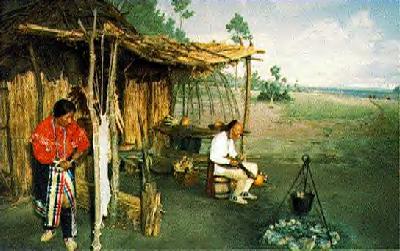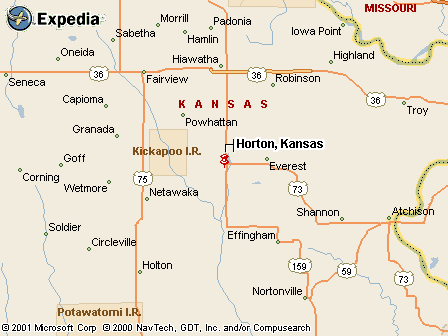|
|
Canku Ota |
|
|
(Many Paths) |
||
|
An Online Newsletter Celebrating Native America |
||
|
August 11, 2001 - Issue 42 |
||
|
|
||
|
Indians Value Their Language |
||
|
by Michele Reaves Medill News Service-July 30, 2001 |
||
|
This diorama shows a reconstruction of the lifeway of the historic Kickapoo people in Illinois. The scene shows the area in about 1815 AD. Courtesy Illinois State Museum |
 American
Indians have learned that when language is lost, the culture is lost. American
Indians have learned that when language is lost, the culture is lost.“You cannot separate language, culture and history,” said Howard Allen, director of the Kickapoo Nation’s School in Horton, Kan. So for the past 15 years, children from kindergarten to 6th grade have been learning Kickapoo as a second language. The school also offers evening classes during the spring and fall for adults. Tribal schools that teach children under 7 and their families American Indian languages could be eligible for funding from programs outlined in an amendment to the Native American Languages Act of 1990. The Senate Indian Affairs Committee voted unanimously this week to send the bill, sponsored by Hawaiian Sen. Daniel K. Inouye, a Democrat. The language must be taught 700 hours a year to at least 10 children. The school offered Kickapoo to its 132 students and 20 HeadStart participants last year, according to Mr. Allen. But the language classes only last 30 minutes to an hour, depending on the grade level. Mr. Allen, who aids Grace Seetot in teaching the language, said he thinks the classes have raised the children’s self-esteem. “They have a better sense of who their ancestors were and where we come from, because this is not a foreign language,” Mr. Allen said. “English is a foreign language.” Dr. Flore Zephir, an associate professor of French at the University of Missouri, said language plays a crucial role in a culture. “Any community that starts to lose its language loses its culture,” she said. “The group loses its sense of being unique, of being different from another group. “The younger generations will see themselves as part of another group,” she added. This has been a problem for many Native American tribes. “Up to the passage of the Native American Languages Act of 1990, the institutions that served the Native American communities promoted a very negative attitude toward the tribal people using their languages,” Darrell Kipp, founder and director of the Piegan Institute, a nonprofit organization that promotes preservation of language of the Blackfeet Tribe of Montana in Browning. He said punitive measures were taken to stop American Indians from “using their language under the notion that they would learn English only so that would assimilate into society.” In the early 1700s, almost 2,000 American Indian languages were spoken across the country, according to Mr. Kipp. Now only 185 tribes have retained their languages to some degree. Six years ago, his organization designed the Nizipuhwahsin School, which translates into Real Speak School. The 50 students from kindergarten to 8th grade are immersed in the Blackfoot language for all their subjects. The school is modeled after a 15-year-old program at the Panunoe Leo Immersion Schools of Hawaii. Mr. Allen said he would like to see the Nation’s school program expand to become an immersion school. “I’d like to be like the Hawaiian immersion programs, so they can come into kindergarten and first grade and can be taught the content in the language,” he said. “I think that’s the only way the language can be brought back is through immersion.” So government funding would be helpful. Mr. Allen said the school receives money from the Bureau of Indian Affairs. The Kickapoo Tribe also funds the school to with proceeds from its casino. |
|
|
|
Kickapoo Language |
|
Kickapoo History |
|
|
||
|
|
||
| Canku Ota is a free Newsletter celebrating Native America, its traditions and accomplishments . We do not provide subscriber or visitor names to anyone. Some articles presented in Canku Ota may contain copyright material. We have received appropriate permissions for republishing any articles. Material appearing here is distributed without profit or monetary gain to those who have expressed an interest. This is in accordance with Title 17 U.S.C. section 107. | ||
|
Canku Ota is a copyright © 2000, 2001 of Vicki Lockard and Paul Barry. |
||
|
|
|
|
|
The "Canku Ota - A Newsletter Celebrating Native America" web site and its design is the |
||
|
Copyright © 1999, 2000, 2001 of Paul C. Barry. |
||
|
All Rights Reserved. |
||

